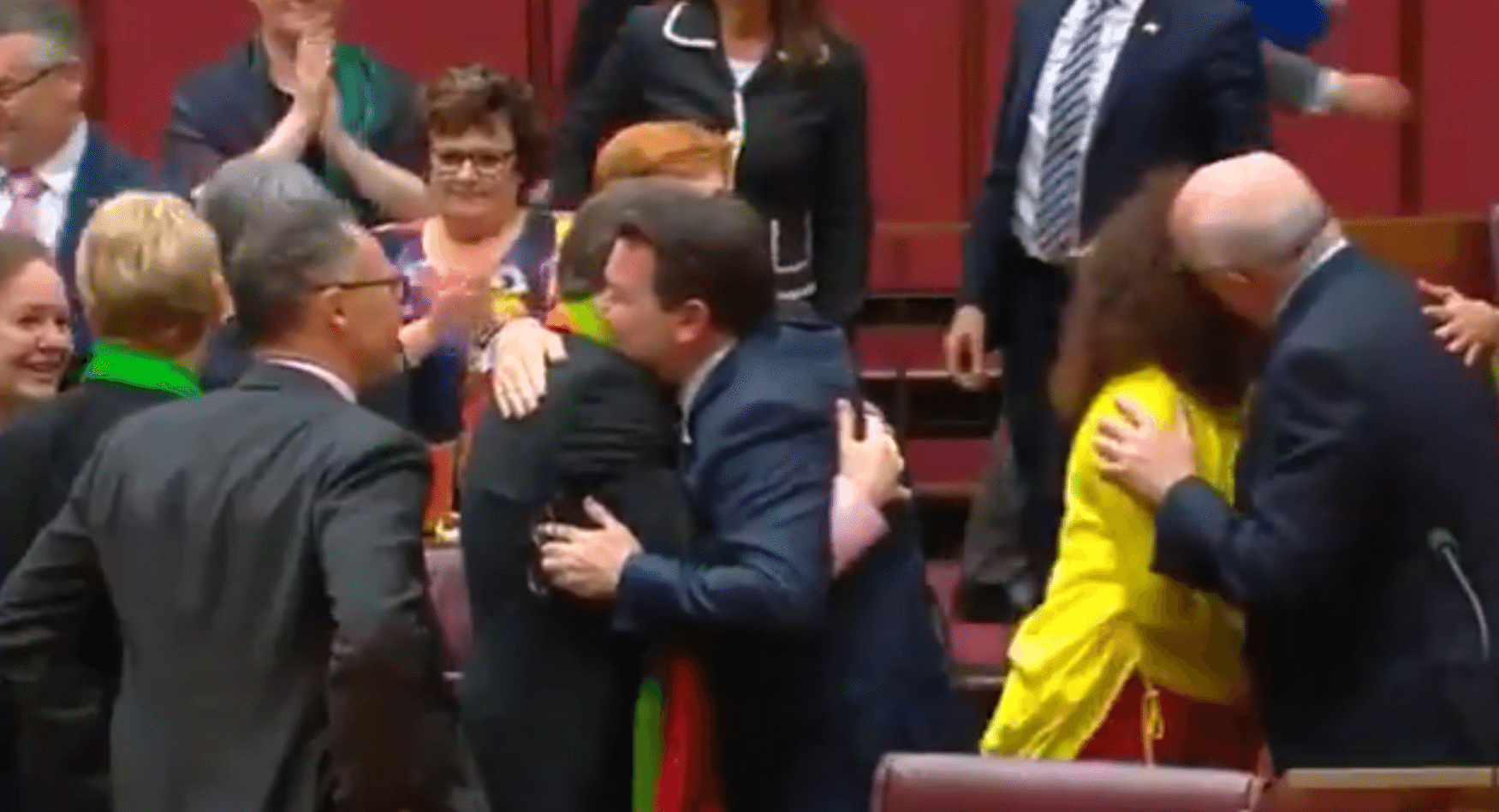
‘The fight for SSM had built up over a decade’: how the ground was laid for the Senate vote

I could barely believe it was actually happening.
Everything the marriage equality campaign had planned and worked for since 2004 when John Howard banned same-sex marriage was coming to fruition.
Finally, the Senate was set to pass marriage equality.
For years we had carefully scrutinised the numbers in parliament and our spreadsheets always showed the Senate was the most likely place the reform would pass.
The Senate also has a stronger history of cross party cooperation and is one step removed from the toxic politics of leadership.
As a result, for many years we focused our attention on ensuring that when the marriage debate began, it would begin in the Senate to give the reform extra momentum.
Now, as senators ground through votes on amendments, the Senate was set to lead, as we had so long hoped it would.
This was possible because of another hope fulfilled: the parties would finally live up to their foundational principles.
The Coalition had allowed its members to vote freely in line with its principle of individual liberty.
It’s true that door was finally unlocked by the postal survey, but only after it had been battered in by years of lobbying, opinion polls, party motions, electioneering, and prominent Liberals speaking out.
In 2015 the marriage equality campaign pushed the Liberals close enough to a free vote that opponents of marriage equality had to come up with a diversionary tactic, a public survey.
But in the end that completely backfired.
Labor also finally lived up to its foundational principle of solidarity in the face of inequality and disadvantage.
However, while Labor still had a free vote on allowing same-sex marriages, it voted as a bloc against amendments that would have compromised the entire bill by punching gaping holes in Australia’s anti-discrimination laws and re-legitimising anti-LGBTI prejudice.
A Labor binding vote is something marriage equality advocates have campaigned hard for over the years, again with lobbying, opinion polls, party motions, and an appeal to core Labor values.
Our campaign resulted in the promise of a party vote on marriage equality after the next election.
Now, it seemed a critical part of that promise has been fulfilled early.
The Greens lived up to their guiding principle too, in their case no discrimination ever.
They sought to remove those sections of the marriage equality bill that allow marrying couples, including same-sex couples, to be refused the services of civil celebrants and organisations that identify as “religious”.
Sadly, their move wasn’t supported, but history will remember it as the first time in the federal parliament a tough stand was taken against religious privilege masquerading as “freedom”.
Again, as with the other parties, the Greens’ strong stand was the result of consistent research, lobbying, and advocacy by marriage equality advocates.
The fact debate started in the Senate and that all three political parties shone during that debate was not a coincidence.
It was because of many years of hard work by people inside and outside parliament and the three parties, pushing our political institutions to become the best versions of themselves.
The postal survey may have finally unleashed this potential but it had built up over at least a decade.
If it had not been for all this well-planned and executed work going back many years, the Senate outcome could have been much worse.
As I watched the final vote being announced and the chamber erupt into cheers and applause I reflected on how change happens.
Change never occurs by itself, or as a result of some isolated event, moment, or person.
It occurs because a large number of people share a clear vision of what needs to happen, a good plan, a lot of hard work, and hearty optimism for a better future.
The fate of marriage equality now rests in the hands of the House of Representatives.
Let’s hope the long years of hard work that saw such a great result in the Senate returns a similar dividend in the house of the people.
To tell MPs to vote for marriage equality without any additional discriminatory amendments go to www.equal.org.au/equalmeansequal.










Good comments, a big well done to Rodney Croome for his efforts in this long campaign. I had hoped the High Court would put a stop to the survey (and thus most of the No campaign) but when the High Court let it go on I’m also glad so many people could grit their teeth and push on regardless.
My two cents are that we should have fought just a little dirtier. When that Tasmanian party entertainer had her contract discontinued for being in the No campaign, we should have put the full blame on the archbishops who started threatening people’s employment the previous week (http://www.huffingtonpost.com.au/2017/08/19/catholic-church-threatens-to-dismiss-staff-who-marry-same-sex-partners-report_a_23154701/). When they started up about religious freedom we should have responded with the recent Royal Commission as evidence of where religious freedom inevitably ends. We should still be talking about Margaret Court’s insane claims about the consequences of a Yes vote. We should still be comparing John Howard’s being on the wrong side of history on this issue with his (since apologised for) calling Nelson Mandela a terrorist in the 1980’s.